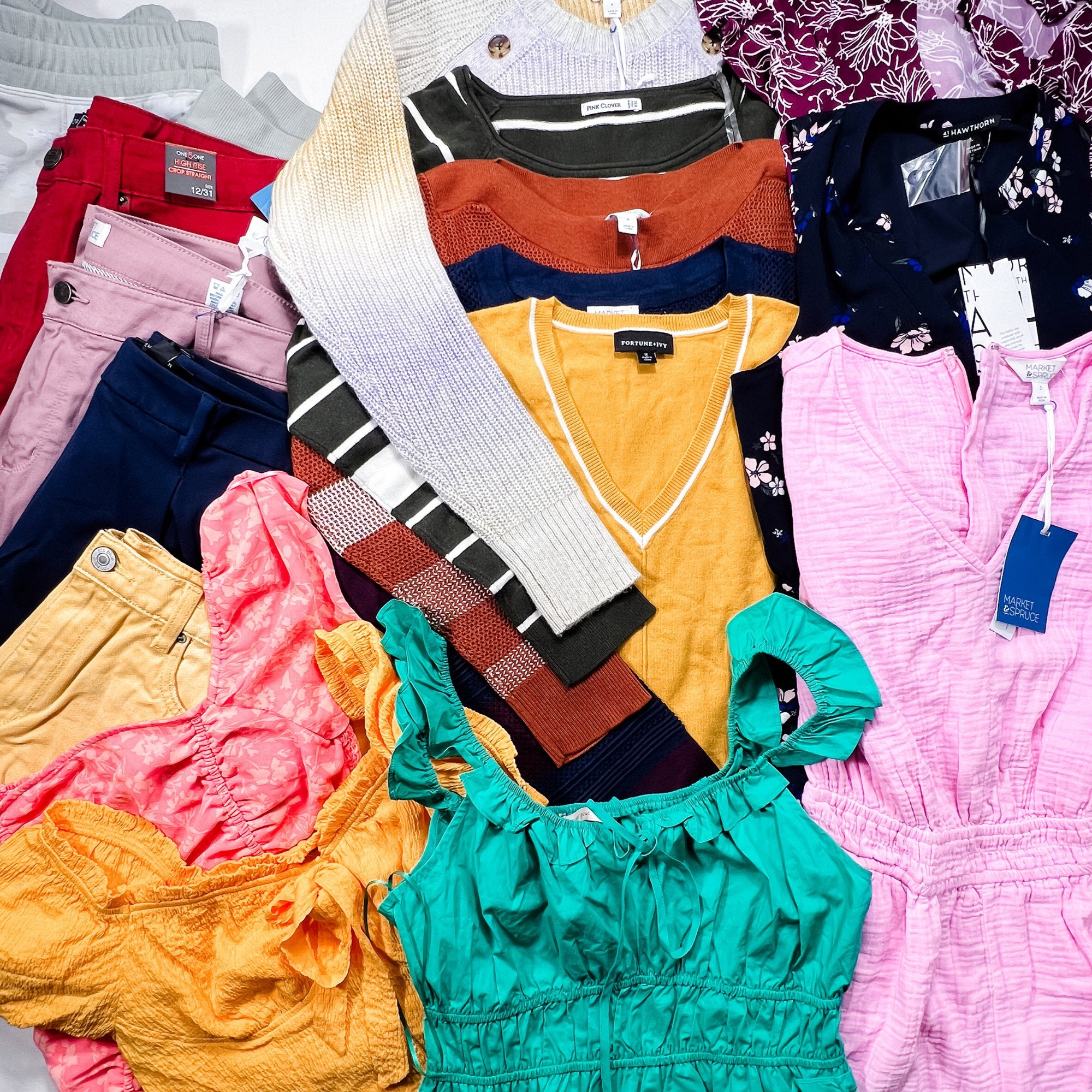Understanding Apparel: The Importance of Fabric Choices in Your Closet
The option of textile in clothing plays a pivotal role in both visual appeals and capability. Different materials supply varying degrees of toughness, breathability, and convenience, directly influencing the wearer's experience. Comprehending these subtleties can boost one's closet significantly. Yet, numerous neglect how these options can affect not just individual design, but also sustainability. What textile choices could redefine your wardrobe and straighten it with both style and duty?
The Function of Fabric in vogue and Capability

Common Fabric Types and Their Qualities
When picking apparel, recognizing the qualities of usual textile types is crucial for making notified selections. Cotton, a widely-used all-natural fiber, is known for its breathability, softness, and flexibility, making it suitable for sportswear and daily garments. Bed linen, another natural alternative, boasts exceptional moisture-wicking homes and an unique appearance, suitable for cozy climates.Wool, typically favored for its heat and resilience, varies in fineness; merino woollen is soft against the skin, while coarser kinds are utilized for outerwear. Synthetic fabrics like polyester and nylon provide sturdiness and resistance to wrinkles, making them popular for activewear and travel garments. Finally, blends, which integrate natural and synthetic fibers, can boost capability while maintaining comfort. By identifying these material attributes, individuals can select garments that lines up with their way of life and visual choices.
Breathability and Convenience: Choosing the Right Fabrics for Different Environments
Choosing the ideal materials for numerous environments can considerably boost comfort and total wearability. Breathable products are necessary in hot climates, as they permit air blood circulation and moisture dissipation. Fabrics such as cotton, linen, and moisture-wicking synthetics successfully attract sweat far from the body, maintaining the user cool and completely dry. On the other hand, in cooler climates, thicker textiles like woollen or fleece provide insulation while maintaining breathability, guaranteeing heat without overheating.Additionally, the option of fabric weight plays an essential duty; lightweight textiles are more effective for summer season, whereas larger options are fit for winter months wear. Recognizing the one-of-a-kind residential or commercial properties of each textile allows individuals to clothe appropriately for differing weather. Inevitably, choosing breathable and comfortable materials tailored to certain environments can significantly improve daily convenience and enhance the total experience of wearing clothing.
Durability and Care: Exactly How Fabric Affects Long Life of Your Wardrobe
Choosing the best products can considerably influence the resilience and care demands of a closet. Fabrics such as cotton and polyester are understood for their resilience and convenience of maintenance, making them suitable for everyday wear. In contrast, delicate products like silk and lace call for even more cautious handling and specialized cleaning approaches, which can increase the moment and initiative needed for care. Branded Clothing.Durability is additionally influenced by the fabric's weave and surface; tightly woven materials tend to resist damage better than loosely woven options. Furthermore, artificial blends usually offer enhanced toughness, integrating the very best qualities of multiple fibers.Understanding the treatment directions for each material is important, as incorrect washing or drying out can cause premature wear. Ultimately, choosing durable products can cause a longer-lasting closet, reducing the frequency of substitutes and adding to a much more lasting style option
The Impact of Material on Fit and Silhouette

Sustainable Textile Choices: Making Eco-Friendly Decisions
The impact of material extends beyond fit and shape to incorporate ecological aspects, prompting an expanding interest in sustainable fabric selections. Environmentally friendly materials, such as natural cotton, hemp, and Tencel, are getting traction amongst consumers who focus on sustainability in their closets. These products are frequently produced with fewer chemicals and water, reducing their environmental footprint.Additionally, recycled materials, made from post-consumer waste, supply a cutting-edge option to the fabric industry's pollution trouble. Brands progressively accept openness in their sourcing techniques, allowing consumers to make informed decisions concerning their purchases.Choosing lasting textiles not just sustains honest methods yet likewise motivates the fashion business to take on even more liable manufacturing techniques. As understanding of ecological problems increases, individuals are advised to assess the long-term influence of their textile options, cultivating an activity towards a much more lasting and eco mindful approach to fashion.
Boosting Style: Just How Fabric Can Transform a Clothing
While numerous may concentrate on shade and you can try here cut when picking a clothing, the selection of textile plays an essential role in raising design and improving total look. browse around this web-site Various materials communicate distinctive moods and messages; for instance, silk exudes high-end and sophistication, while jeans offers a casual, kicked back vibe. The structure and drape of a material can considerably alter the silhouette, with structured fabrics offering a refined appearance and softer ones creating an extra fluid, kicked back aesthetic.Moreover, the weight of the material influences wearability throughout seasons. Light-weight fabrics like linen and cotton are suitable for summertime, while larger products such as woollen and velvet supply warmth and style in colder months. Recognizing textile properties, such as breathability and stretch, additionally equips individuals to make educated selections that improve convenience without compromising design. Eventually, the appropriate material can transform an outfit from normal to extraordinary, making it an essential factor to consider in any type of closet.
Often Asked Questions
Just how Do I Identify the Fabric Content of My Garments?
To determine fabric web content, one can analyze treatment labels, conduct melt tests for fiber recognition, or get in touch with textile swatches. These approaches assist distinguish products, guaranteeing informed options for apparel treatment and maintenance in everyday wear.
Can Textile Selection Affect My State Of Mind or Self-confidence?
Material selection can considerably influence an individual's state of mind and confidence. Branded Clothing. Specific materials might stimulate sensations of comfort or sophistication, while others can feel unflattering or restrictive, eventually affecting self-perception and psychological health throughout the day
What Fabrics Are Finest for Delicate Skin?
For individuals with sensitive skin, natural fabrics like bamboo, linen, and cotton are usually suggested. These products are breathable, hypoallergenic, and much less likely to cause irritation, making them ideal selections for convenience and skin health.
How Do I Correctly Wash and Look After Different Fabrics?
To correctly care and wash for various materials, one have to consider each material's certain requirements, consisting of temperature level settings, detergents, and drying techniques, ensuring longevity and preserving the textile's initial high qualities for excellent use.
Exist Certain Fabrics for Athletic or Efficiency Wear?
Athletic or efficiency wear often uses fabrics such as polyester, spandex, and nylon. These materials are made for moisture-wicking, breathability, and adaptability, boosting activity and comfort throughout physical tasks while offering toughness and support. Conversely, in chillier environments, thicker materials like wool or fleece supply insulation while retaining breathability, ensuring heat without overheating.Additionally, the choice read the article of material weight plays an essential duty; light-weight textiles are more effective for summertime, whereas larger choices are matched for winter months wear. In contrast, fragile products like silk and shoelace call for more careful handling and specialized cleaning methods, which can enhance the time and effort required for care.Durability is also influenced by the fabric's weave and finish; firmly woven fabrics have a tendency to resist wear and tear much better than loosely woven alternatives. In comparison, rigid fabrics can limit movement however supply a timeless, polished look.Moreover, the density and texture of the material can influence the aesthetic perception of body shape. The influence of fabric extends past fit and silhouette to incorporate environmental factors, prompting an expanding passion in lasting material choices. The texture and drape of a fabric can substantially alter the shape, with structured fabrics providing a polished appearance and softer ones creating a more fluid, relaxed aesthetic.Moreover, the weight of the fabric influences wearability throughout seasons.